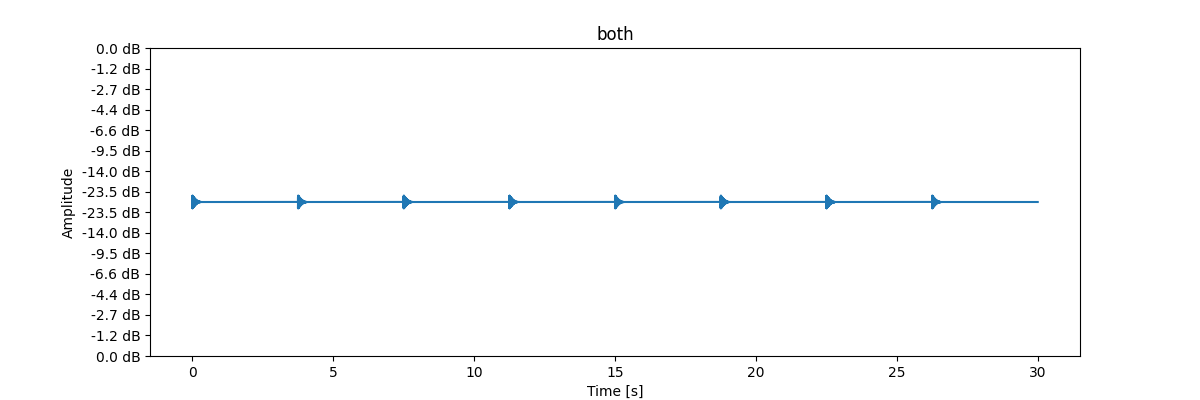Adaptive LUFS/RMS

Although the relatively long window durations of LUFS and RMS are useful for capturing the audio’s dynamics accurately, the relatively slow response times can lead to artifacts in certain scenarios. For example, when the audio is first played, the initial loudness measurements will be very low. This is because the window is initially filled with silence, weighing the measurements down. This ultimately leads to a delay in the measurement response, which ultimately can prevent the initial transient from being compressed at all.
The waveform below shows a heavily compressed kick drum with more than 3 seconds in between kicks. For this example, the compressor is configured with short-term LUFS loudness type, which has a very long window duration (3 seconds). Since the kicks are short duration, and there is relative silence between them, the compressor simply doesn’t have enough time to react. The result is the kick passes through nearly unchanged.

Adaptive startup
The next waveform shows the same compressed kick drum, but this time with adaptive startup enabled. This feature allows the compressor to quickly respond to the first kick, even though the window is initially filled with silence. As the compressor’s window fills with audio, the compressor reverts to its normal behavior. The result is the kick is compressed as desired, and the compressor gracefully transitions back to longer window length as the audio continues. But as you can see, future kicks still pass through.

Adaptive edges
The next waveform shows the same compressed kick drum, but this time with only adaptive edges enabled. In this mode, the compressor detects transitions across a loudness threshold and temporarily reduces the window length. This allows the compressor to respond quickly to all of the other kick drum hits, while still maintaining the longer window length for the rest of the audio. However, since the initial kick occurs at the very beginning of the audio, the compressor doesn’t have enough time to react. The result is the first kick passes through.

Adaptive startup+edges
The final waveform shows the same compressed kick drum, but this time with both adaptive startup and adaptive edges enabled. This combination allows for all of the kick drum hits to be properly compressed. The APU Loudness Compressor supports both of these adaptive modes, and the threshold for relative silence can be configured as well. This provides a versatile technique for handling transients in a variety of scenarios.
